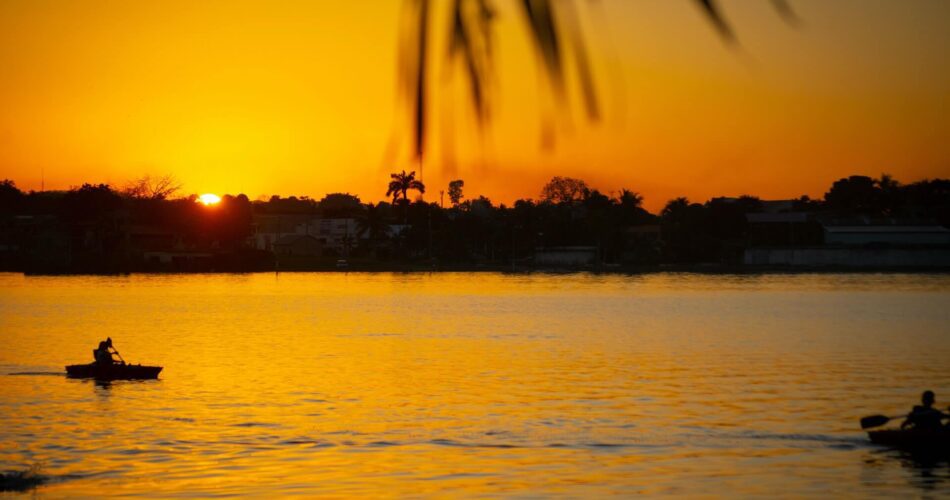Introduction: Quick Facts of This Beautiful Country
According to numerous embassies throughout the globe, the country is a dangerous place to visit. Despite this, the country receives more than 1.3 million international tourists each year. Amazingly, many of these visitors wind up deciding to stay and trying to find the best things to do in Guatemala.
Guatemala is Central America’s northernmost nation. It has a border with Honduras and Belize on the Caribbean Sea and El Salvador and Mexico on the Pacific Ocean. There are around 11 million inhabitants, the bulk of whom are Mestizo, in the country’s 42,000-square-mile area (the size of Tennessee) (Amerindian or mixed Amerindian-Spanish).
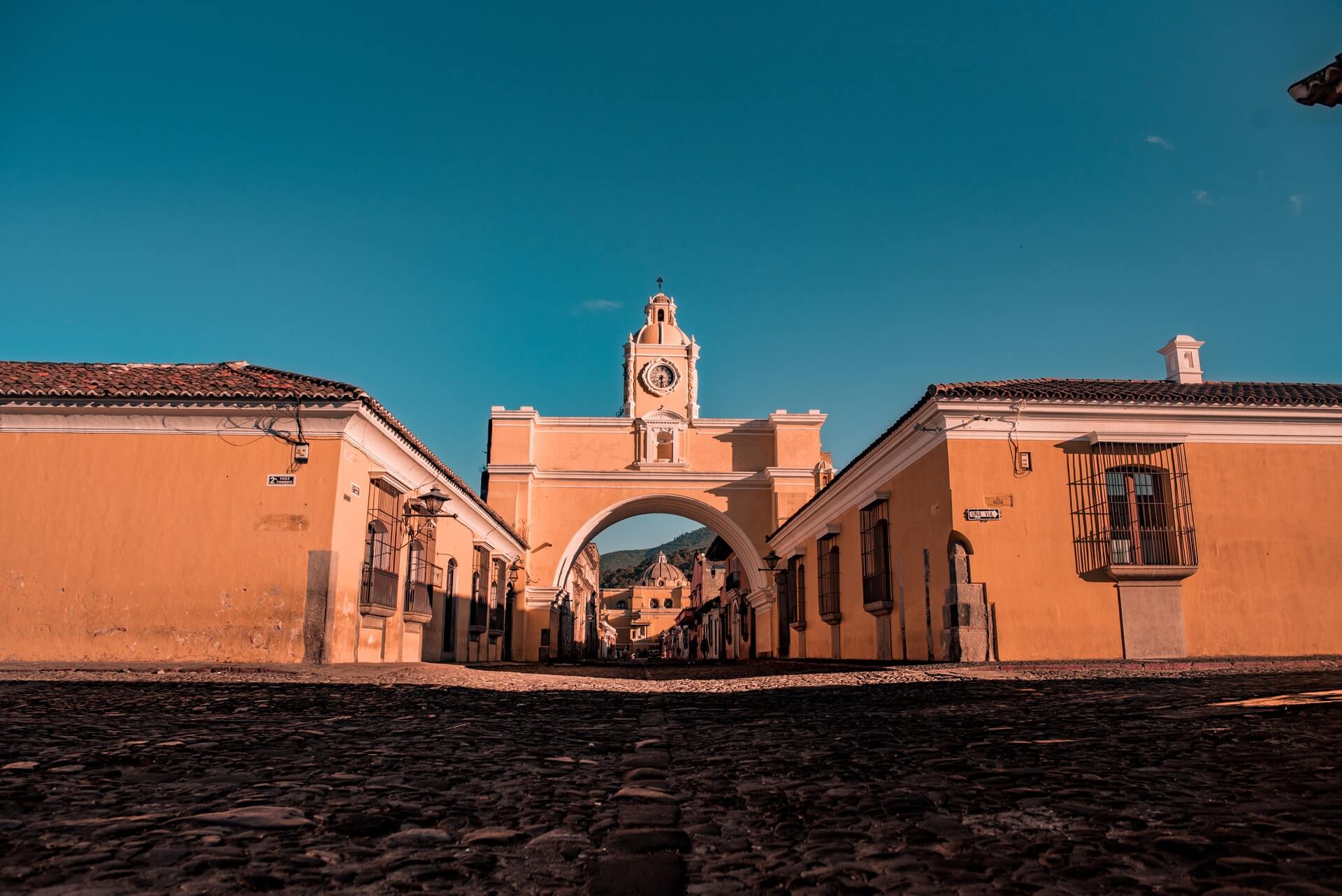
Calle del Arco, 5a Avenida Norte, Antigua Guatemala, Guatemala
Some people just hang around, taking advantage of the low cost of living and low-priced Spanish education in Guatemala. People who can’t bear to leave their idyllic hostels will sign work-trade agreements to keep them there. Visitors can also become involved in many volunteer and humanitarian endeavors. Even though several embassies worldwide have designated the country as a dangerous destination, more than 1.3 million foreign tourists visit each year. Surprisingly, a significant portion of these tourists decides to remain.
For those looking for a cheap place to live and a good deal on Spanish courses in Guatemala, there are many options available. Work-trade arrangements at hostels in paradisiacal places may tempt some people to stay longer than they otherwise would. Visitors can also become involved in many volunteer and humanitarian endeavors.
It’s no surprise that Guatemala, the birthplace of the Maya, is a rainbow of a country. Volcanic lava flows in Guatemala’s Petén area and the lush northern rainforest, home to howler monkeys and a rare scarlet macaw contrasting with caverns’ shadows. A little farther south, the Caribbean Coast near Livingston is covered in expanses of white sand, while the Pacific Coast near Monterrico is home to turtles and spectacular orange sunsets. Antigua’s shadow of three volcanoes serves as a cultural sideshow to Guatemala City. In addition to the pastel-colored houses that line the cobblestone lanes, there are collapsed church arches, columned courtyards, and plenty of flowers and fountains.
Zobraziť tento príspevok na Instagrame
Guatemala has a wide wealth disparity despite its expanding economy. Many Guatemalans are descendants of Spanish colonial-era households, but many indigenous people are impoverished. In Guatemala, race and socioeconomic status are inextricably connected.
Central American economies are dominated by Guatemala’s. The Guatemalan economy has been steadily rising since the signing of the 1996 peace agreements. This increase has been accompanied by moderate development, mostly owing to tourism. The Guatemalan economy is heavily dependent on tourism, employing around a third of the population. In many cases, the money generated by tourists is reinvested in the local economy.
The 10 Best Things To Do In Guatemala
Although Guatemala has a fair quantity of ruins and rainforests, the country is much more than just that. It’s a land of enormous lakes, Mayan settlements, and raging stratovolcanoes. For any visitor, there are countless activities to choose from in Guatemala. Explore rainforests or go bird-watching if you’re a nature lover. You’ll see Mayan communities and old temples if you’re into history. And if you’d rather take a deep breath and decompress, there are peaceful spots where you may do just that. Whether you’re on a Central American backpacking trip or want to explore Guatemala on your own, there are a plethora of activities to choose from. How to fit them all in is the only issue!
We’ll go through all the best things to do in Guatemala, as well as the must-see spots if you’re on a tight schedule. If you have more time in this fascinating country, we’ll visit several lesser-known attractions and activities.
1. Tikal’s Mayan ruins are a must-see for visitors.
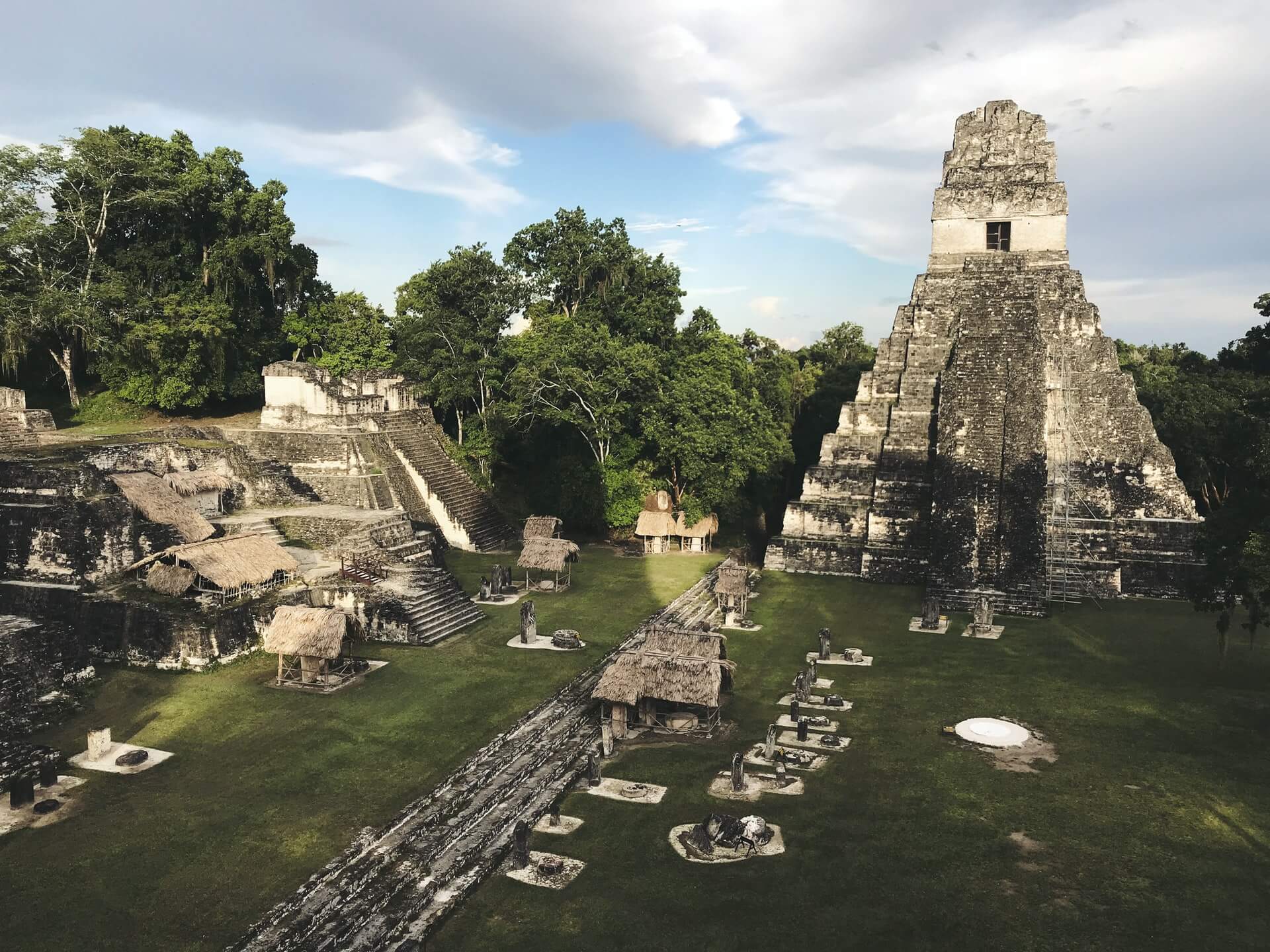
Templo II, Tikal, Petén Department, Guatemala
There are several Mayan ruins in Central America, but Tikal is one of the most well-known. This was formerly one of the most important towns in the Mayan civilization, located in northern Guatemala near the borders of Belize and Mexico. Tikal has fewer tourists than other well-known ruins since it is more difficult to get there. You may also imagine yourself as Indiana Jones while exploring the ruins because the structure is enormous and stretched out across a jungle.
2. Volcán Pacaya
Volcano hiking is one of the most exhilarating things in Guatemala, as the country is home to many active volcanoes. Volcano Pacaya, which can be easily accessed from Antigua Guatemala, is one of the best. The volcano is extremely active and frequently spews smoke and lava into the sky. Therefore the walk must be accompanied by a guide. Evening hikes are ideal since you’ll get to your destination around sunset and watch a spectacular fireworks display before making your way back down in the dark with only a torch for light at your disposal.
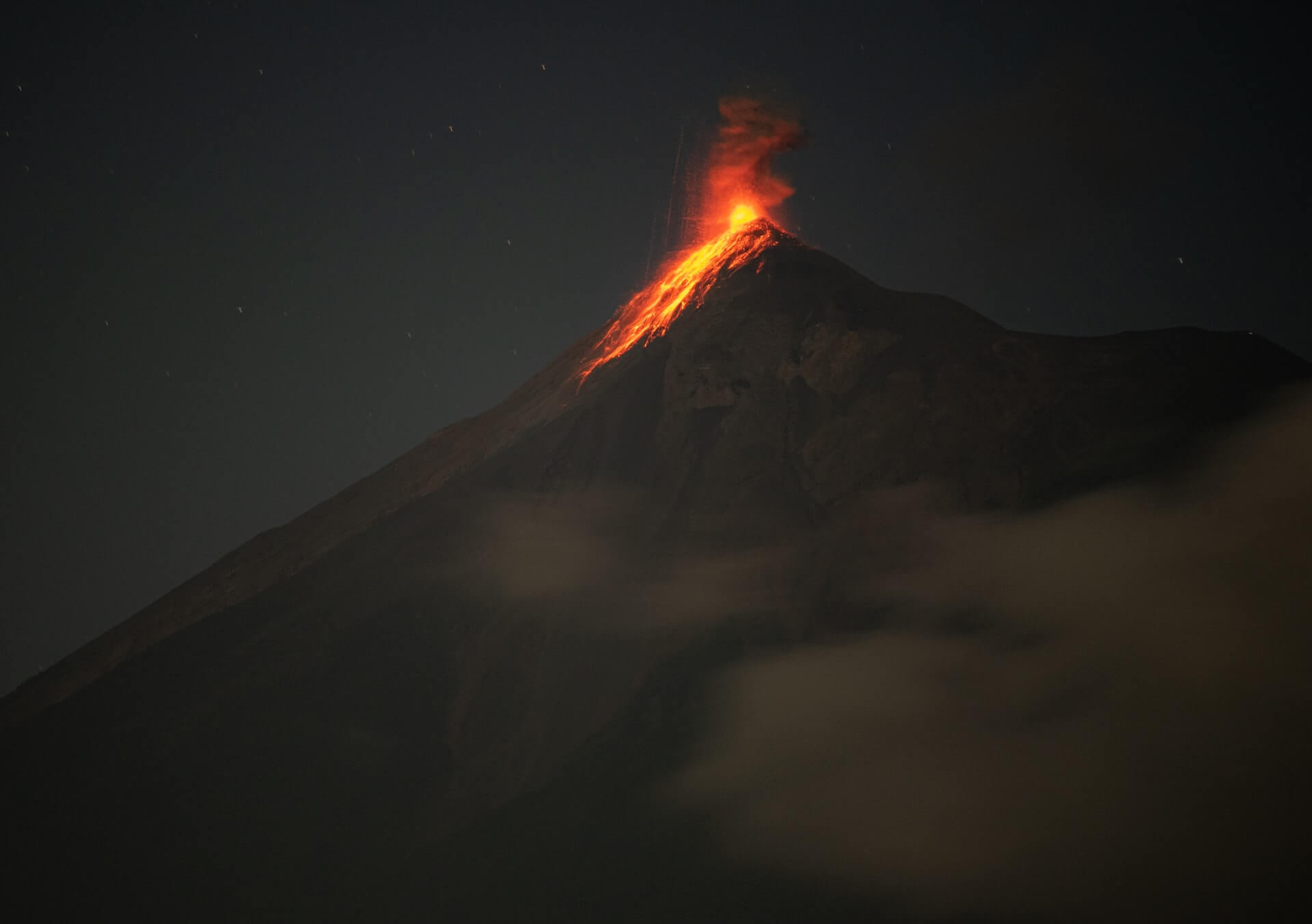
It’s not a tough trek, but the sand is so thick that it can be challenging. Make sure to include a windproof jacket and a few additional layers for the summit. Depending on your pace, the hike might take anywhere from four to six hours. Be aware that the national park charges an admission fee of roughly $7. You may hire a guide at the information center at the park’s entry, or you can join one of the daily guided excursions from Antigua, Guatemala, which typically include transportation.
3. Take a dip in the crystal clear waters of Semuc Champey’s turquoise pools.
Semuc Champey’s turquoise pools are as stunning as they appear on Instagram, and they’re much better in person. Play in the water and take photographs all day long. And don’t forget to take in the stunning views from the mirador. To get to this natural park, you’ll have to trek through the forest to a succession of natural ponds, where blue water cascades down the sides. At least three days are required to visit Semuc Champey, including two days of travel and a minimum of one day at the pools, which is a full day’s journey from either Antigua, Guatemala, or Flores. To get to Semuc Champey from Lanquin (the closest town), most visitors choose a trip that includes stops at local cafes, river tubing, and the chance to swing above the river on a giant swing. The tour also typically includes admission to the natural park and pools.
4. Flying in the air at Panajachel
It’s impossible to overlook Lake Atitlán, surrounded by mountains and volcanoes and inhabited by Mayan communities. It’s a no-brainer. One of the best things to do in Panajachel, and one of the best things in Guatemala, is ziplining. Real World Paragliding is a great place to go if you’re looking for an adrenaline rush. Those people are the real thing. The trip lasts 20-45 minutes, depending on the wind and your weight, and costs roughly 700 Quetzales ($90). Twenty minutes later, my big ass was gone.
5. Take a Chicken bus ride.
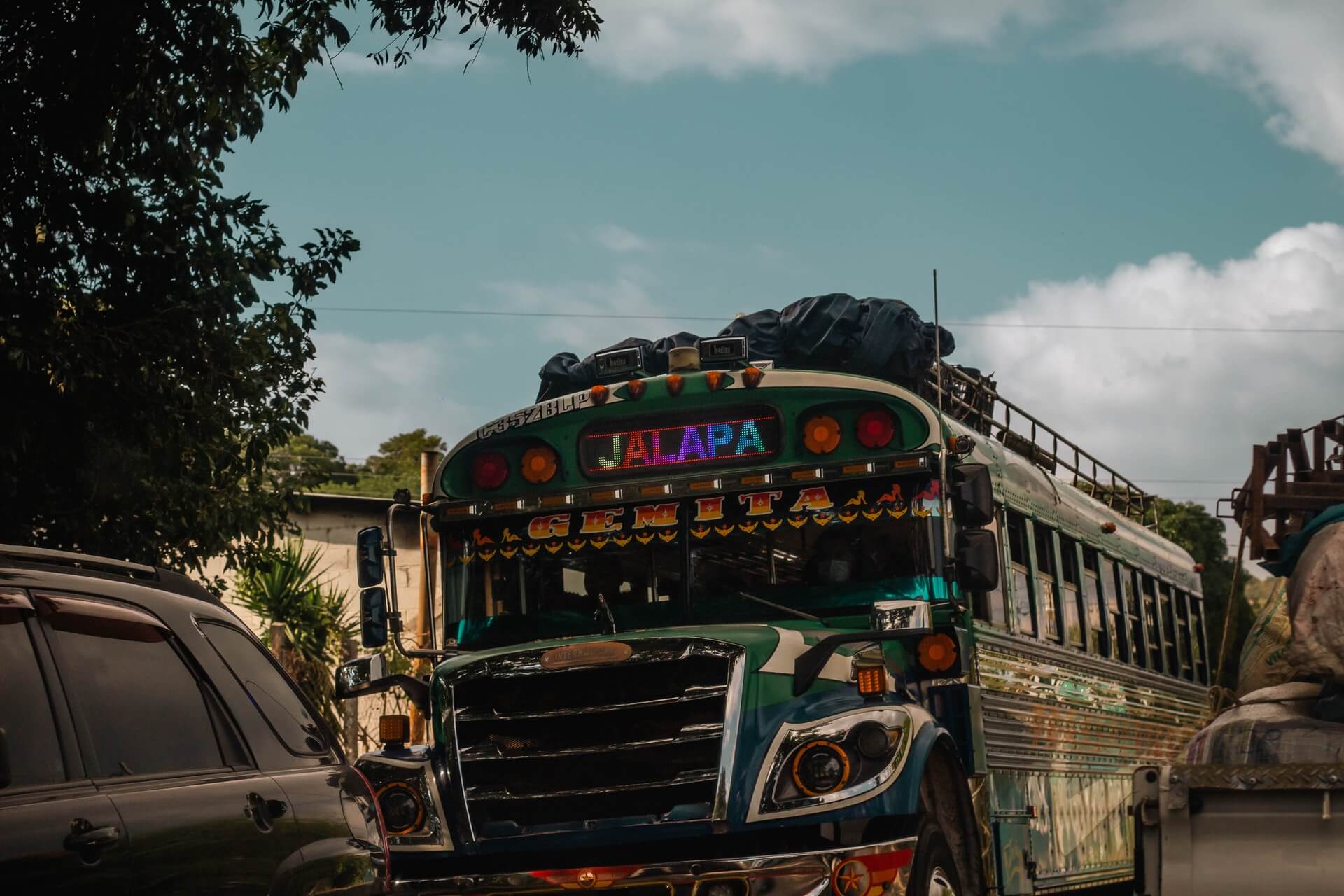
Guatemala is a great spot to ride in one of these brilliantly colored American school buses, widespread throughout Central America. They’ve been dubbed the “chicken bus” because people use them to transport anything from machinery parts to large baskets of vegetables too, of course, chickens! Buses can be rather packed depending on the route. But don’t be shocked if the driver has to stop and pick up additional people. A chicken bus can always fit more passengers! Using public transportation in a foreign nation is always a new and exciting experience for the traveler. It’s much more difficult when you don’t speak the language or know how to express your desire to visit a particular location. In addition, one of the best methods to get around is to ride a tuk-tuk or use the metro, which may not be available in your own country. The Chicken buses in Guatemala were the most interesting and enjoyable kind of transportation I came across.
6. Investigate the Ruins of the Tikal Jungle
Tikal is Guatemala’s most popular tourist destination. Over 200 square miles of land, it’s the biggest pre-Columbian Mayan archeological site, and it was utilized in the filming of Episode IV of the Star Wars series. It’s mind-boggling that so much of it has yet to be discovered. As we speak, new buildings are being unearthed. The Temple of the Grand Jaguar and the numbered temples are Tikal’s most notable attractions. Temple IV’s high steps were one of my favorite places to gaze out over the forest.
Taking a guided tour is the best option if you decide to visit. The local economy is bolstered by tourism in this area. In addition, the intriguing stories the guide tells about the ruins make them come to life. It’s also possible to visit the Tikal ruins without a guide if you don’t care about history and want to take amazing selfies without being photobombed. You’ll need to fly or take a bus to Flores to get there. Flores is closer to Belize City than Guatemala City is to Guatemala City. The shuttle trip to the Tikal National Park entrance from Flores takes an additional hour and a half.
7. Colorful Island of Flores.
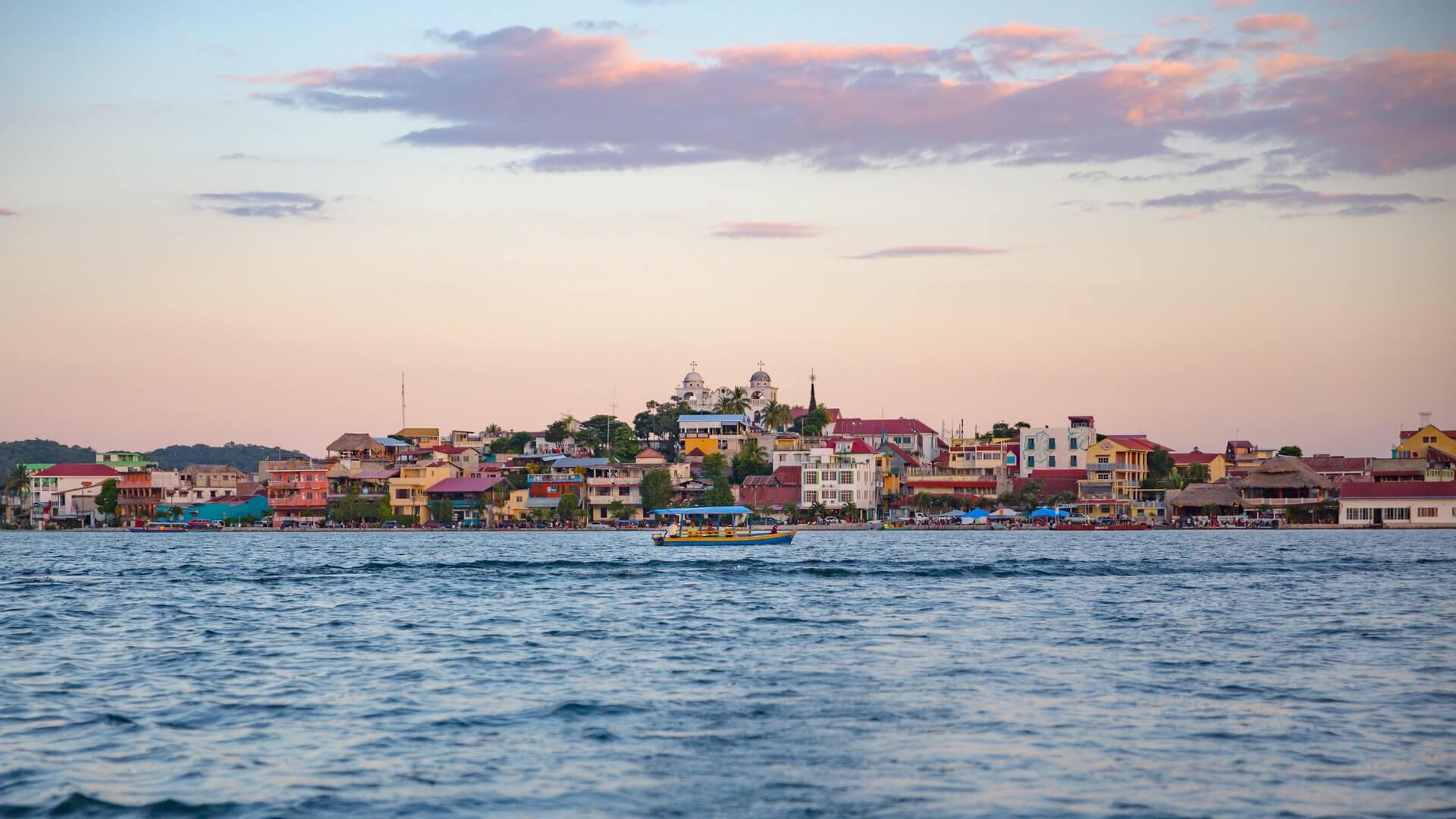
Flores, Guatemala
On the small island of Flores, located on Lake Peten Itza, you’ll likely spend the night if you’re visiting Tikal. Take photographs of the colorful buildings on the island and gaze at the sunset over the lake while strolling around the island. Renting a canoe for a few dollars an hour is an option if you’re feeling daring (the water is calmer in the morning). The Uaxactn ruins, the famed rope swing, ziplining at Ixanpajul Natural Park, and the short climb up to El Mirador del Rey Canek are all within a short bus or ferry trip from Flores.
8. Antigua
Though they were bad as a group, they had a few good city planners to thank for their success. Half of the reason people come to Antigua is because of the city’s grid pattern and street numbers.
It’s easy to see why people wind up staying here longer than they expected, even if they don’t want to. With its cobblestoned colonial beauty and welcome plazas, the city provides the perfect laid-back ambiance for its tourists. The city is full of expat-friendly pubs, affordable eateries, welcoming plazas, busy street markets, and even some modern-day comforts like gourmet dessert cafes. Away from the gift shops, you’ll find views like this:
It’s one of the few Guatemalan cities that are truly beautiful because of its colonial legacy, while other cities suffer from modern urban expansion. It’s one of the main reasons people come to Antigua and immediately head to the island’s southernmost city.
There’s a lot to do surrounding the city for those who are a little more adventurous, with almost every hostel offering cultural and outdoor trips to various neighboring destinations. Volcano hikes are a popular activity, but if you’re up early enough, you can still visit some of the more remote highland villages, market towns, and lakeside resorts. It’s a terrific starting point for exploring the area, as well as a pleasant spot to return to at the end of a full day of touring.
9. Visit the mountaineer’s paradise of Xela
In Xela, also known as Quetzaltenango, multi-day mountain excursions, hot springs relaxing vacations, and volcano treks may all be organized from here. To prepare for the altitude change, keep in mind that your body and mind may take some time to acclimate. Then again, I may be tired.
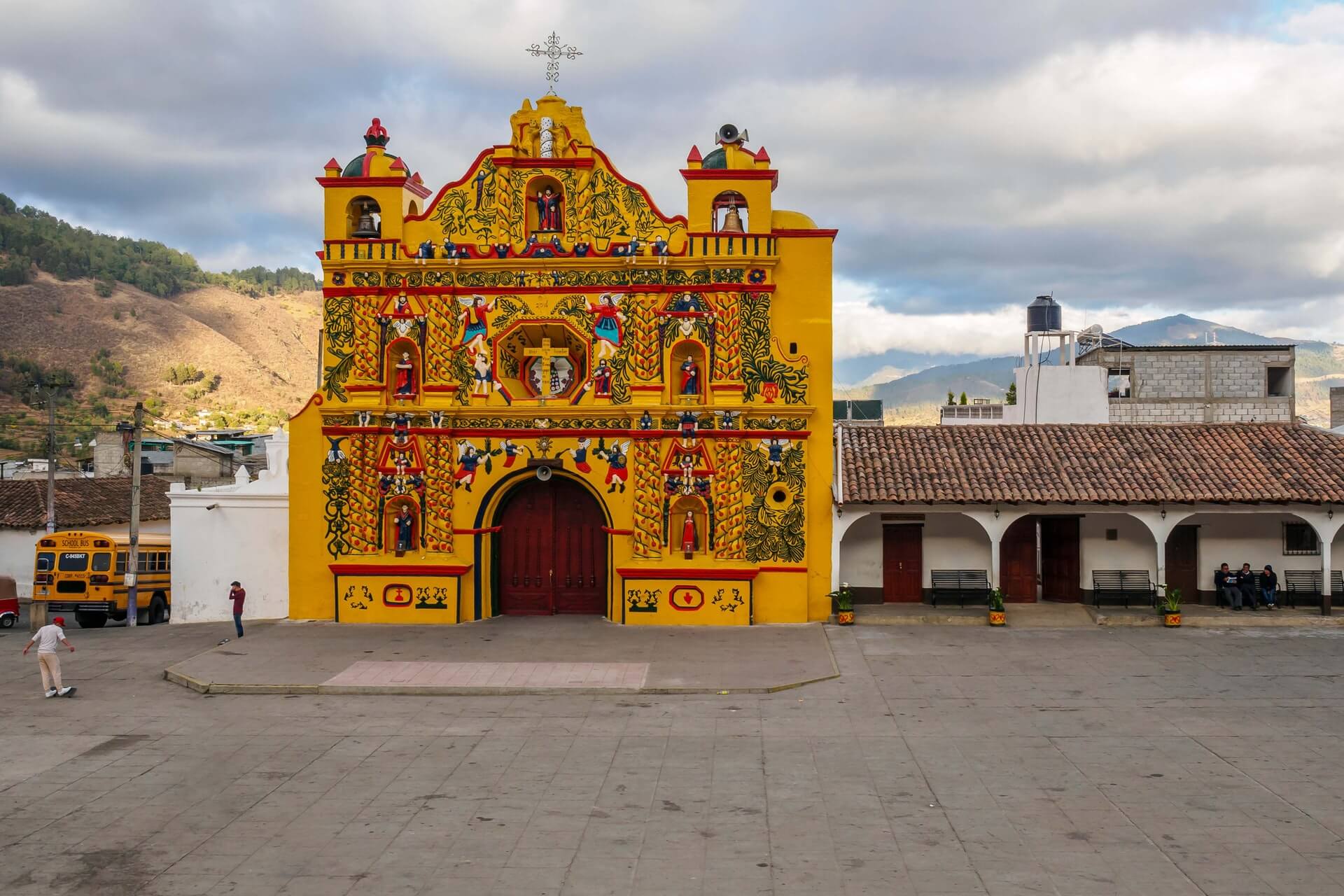
San Andrés Xecul, Totonicapán, Guatemala
The city itself is Guatemala’s second-largest, with a very non-touristy vibe and none of the capital’s weird, unpleasant reputation. There are bustling plazas in Xela during the day and nightlife that seems to thrive without the need for foreign currency. Xela is contemporary and active. It’s refreshing to be able to stroll about all day without someone attempting to sell you anything, unlike some of the more popular tourist destinations.
10. Relax and Have a Taste of Guatemalan Coffee and Chocolate
What is the most famous thing about Guatemala? How do you know whether you’ve had enough of Guatemala? There are numerous answers, but coffee and chocolate are the most important ones!
In Guatemala, nutrient-rich soil, high altitude, and moderate temperature are ideal for the cultivation of coffee and cocoa. Because of this, Guatemala has continuously been ranked as one of the world’s leading coffee producers. Because nearly all of Guatemala’s coffee plants are shade-grown, the coffee from this country has a very rich and fragrant aroma. Huehuetenango and Atitlan coffees are the most popular in Antigua.

Coffee from Antigua has a spicy and smokey taste that is distinct. On the other hand, Huehuetenango coffee is tastier and more reminiscent of a fruit smoothie. With its citric and floral undertones, Atitlan coffee is a good choice if you like a brighter, more fragrant cup.
Top 10 Must-See Places in Guatemala
Guatemala is a country with a lot to offer. It’s a country worth visiting, from the great natural beauty to the rich culture and history to the wonderful people.
The list of places that include the best things to do in Guatemala you have to see varies depending on what you want to do or experience. If you want to explore nature and wildlife, El Imposible National Park is a great place that offers adventure and exploration opportunities. If you want to learn about Guatemala’s history from its Maya roots, Tikal National Park is an excellent place to visit.
1.Guatemala City
Visitors and residents alike may enjoy a variety of attractions in Guatemala City, the country’s capital and confusingly known as “Guatemala City.” There has a rich history in Guatemala’s most populated city, which dates back to the Mayan civilization and spans from Spanish invasions to the country’s independence movement. Knowing the city’s zones is vital to getting the most out of this bustling metropolis. Try to see the National Palace and the Catedral Metropolitana in Plaza Mayor in the city’s center section, Zone 1. Zone 4 is a great place to see some of the best street art in the city and the Popol Vuh Museum and the Museo Ixchel del Traje Indiana. Many pubs, restaurants, and clubs can be found in Zona Viva. The city is full of marketplaces, retail centers, and stylish cafés and coffee shops.
2.Chichicastenango
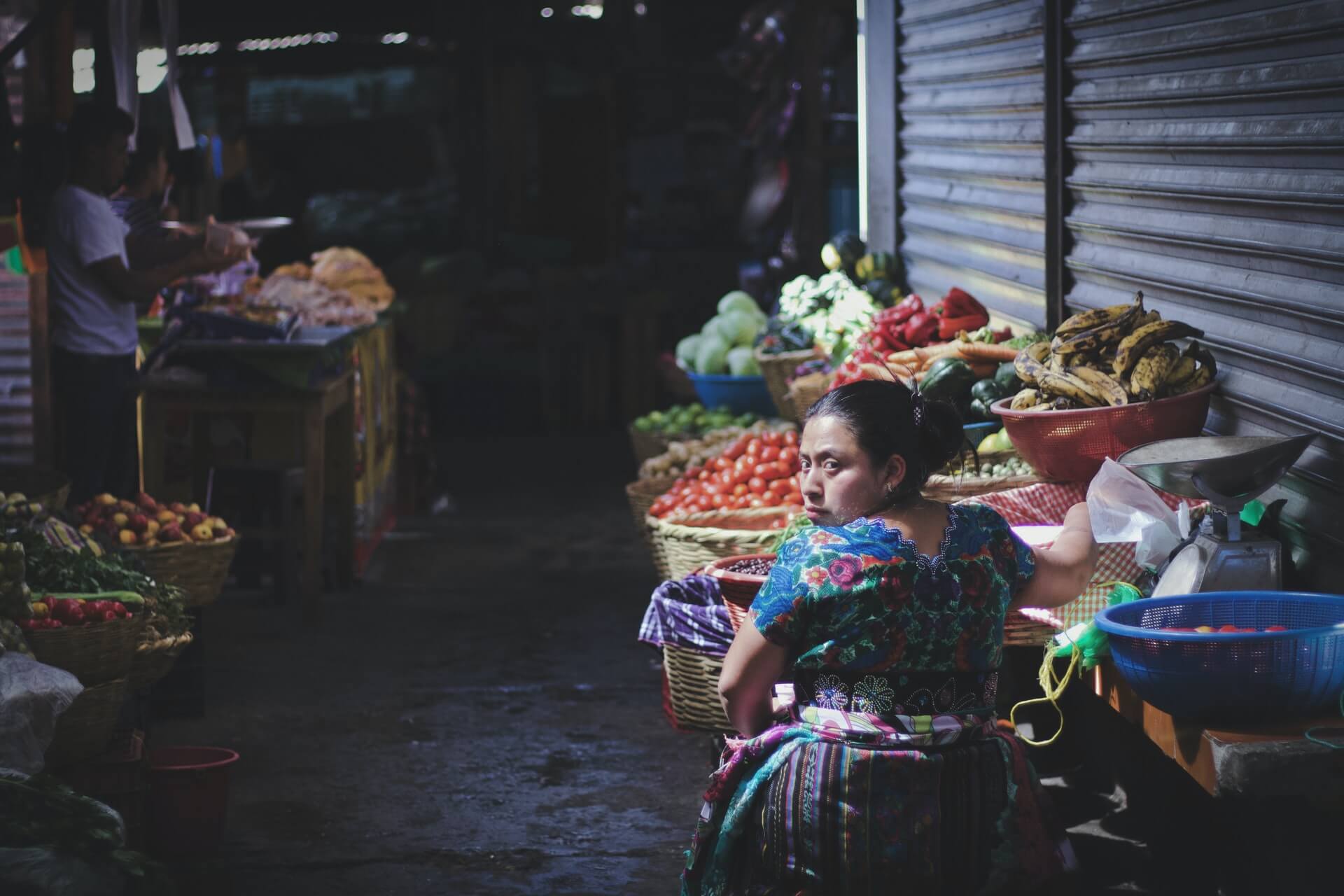
Chichicastenango, Guatemala
Guatemala’s hilly highlands is home to Chichicastenango, renowned for its bustling marketplaces. Chichicastenango features one of Central America’s major marketplaces on Thursdays and Sundays. You’ll find sellers selling a wide variety of goods and services at the market. Products such as handmade crafts, incense, pots and pans, grindstones, wooden boxes, machetes, fabrics, dance masks, poultry and meats, and a variety of other interesting items will captivate visitors’ interest. Chichicastenango also has a few historical sites to see if you’ve done enough shopping. Chichicastenango has a 15th-century cathedral, a Mayan shrine, an archaeological museum, and a number of additional places to explore and find the best things to do in Guatemala.
3. Puerto Barrios
Puerto Barrios, a port town on Guatemala’s east coast, sits on the Gulf of Honduras. Puerto Barrios, previously a bustling port with ties to coffee and banana plantations, is today a sophisticated metropolis that attracts a large number of cruise ship passengers. It features a lot of natural waterfalls and pools, native wildlife like jaguars, bird-watching possibilities, indigenous flora and plants, and so on, making it a popular destination for tourists. The various markets and the La Pradera Mall are great places to go shopping. Also accessible are exciting nightlife, first-rate dining options, and an array of exciting tourist attractions in the city’s heart. From Puerto Barrios, you may visit the Mayan ruins of Quirigua and the Garifuna culture of Livingston, both of which are within a short distance.
4. Panajachel
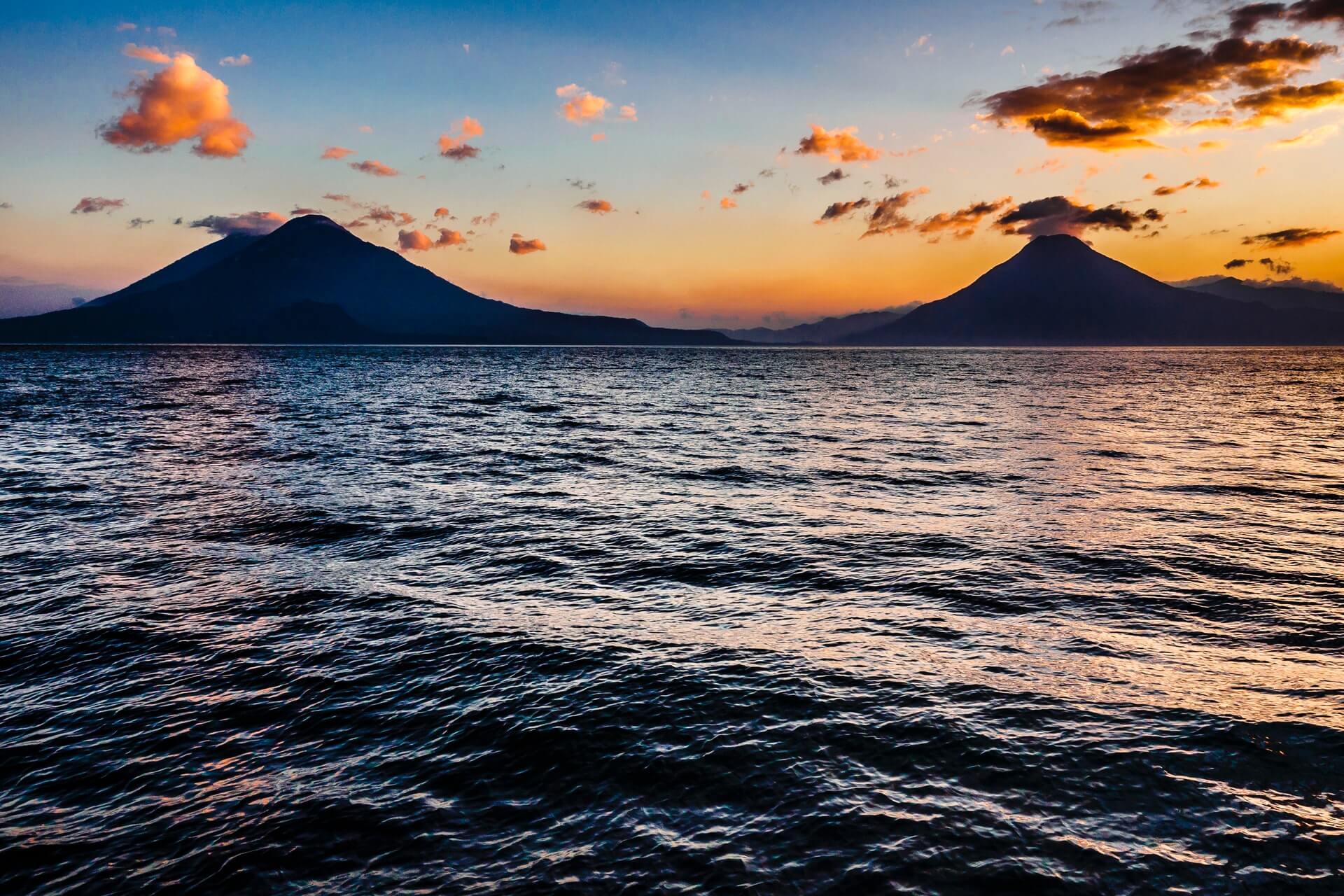
Panajachel
Located right on Lake Atitlán, Panajachel is a convenient layover spot for travelers on their route to the lake’s attractions. It is believed that the village of Panajachel offers spectacular views of Lake Titicaca’s sunsets. One of Central America’s oldest art galleries, La Galeria, is a must-see. The Museum Lacustre Atitlan and the Casa Cakchiquel are reported to have been home to several important people, including writers, revolutionaries, and painters over the years.
5. El Mirador
A trip to El Mirador is a must if you’re ever in Guatemala. An ancient Mayan town can be found here. By the end of the 9th century, it had become completely desolate. For decades, the remains of El Mirador, a jungle-covered, secluded region found in 1926, were mostly ignored. The location is now one of Guatemala’s most popular tourist destinations, but the trek is difficult for the faint of heart.
Although it is one of the most important Mayan remains, its distant location prevents it from being popular. It is only possible to drive to the area from the nearby community of Carmelita, which is a reasonably close distance away. A minimum of five days and four nights must be spent in the bush, dodging mosquitoes and other pesky insects. So, as you can see, this is a grueling task that is not for the average traveler.
6. Livingston
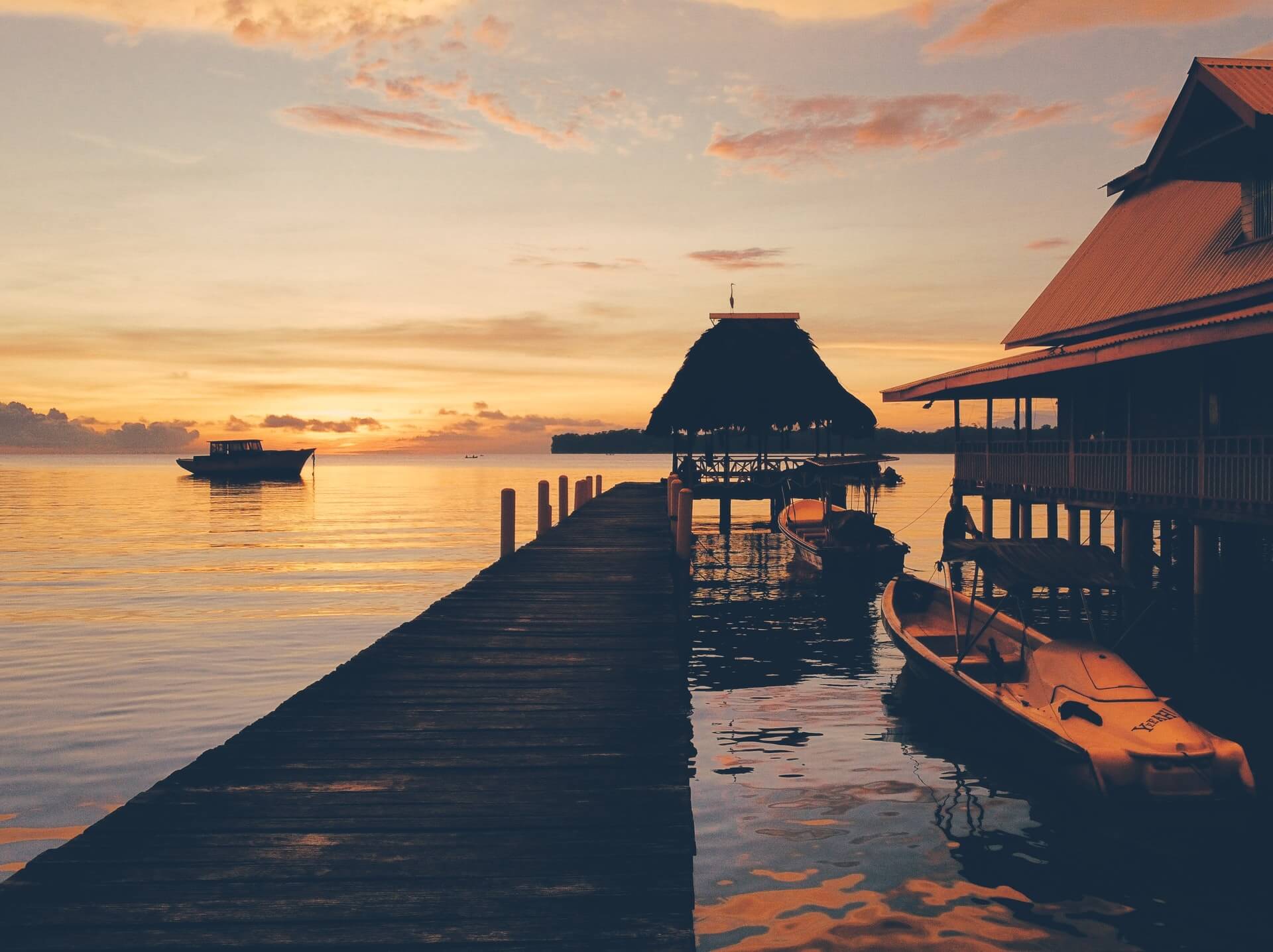
Livingston, Guatemala
Livingston is a gem of Guatemala’s Caribbean coast, named for American judge and statesman Edward Livingston. It’s only reachable by water. However, because two ferries are always running, getting around is never an issue. Garifuna culture revolves around this place. Tourists may sample the local cuisine and music while they are in town. You may even take part in a local dancing competition called Punta. You’ll be taken aback by this hypnotic dance with an outstanding beat. It’s one of Guatemala’s top tourist destinations.
7. Monterrico
Monterrico, Guatemala, is a popular tourist destination in Guatemala. In addition to its volcanic black sand beaches and yearly sea turtle invasion, Monterrico is a popular tourist destination in Guatemala. The beach is a popular tourist destination in Guatemala. They have a lot of interesting, though strange, slopes, but the beaches are too hot to stroll on without shoes.
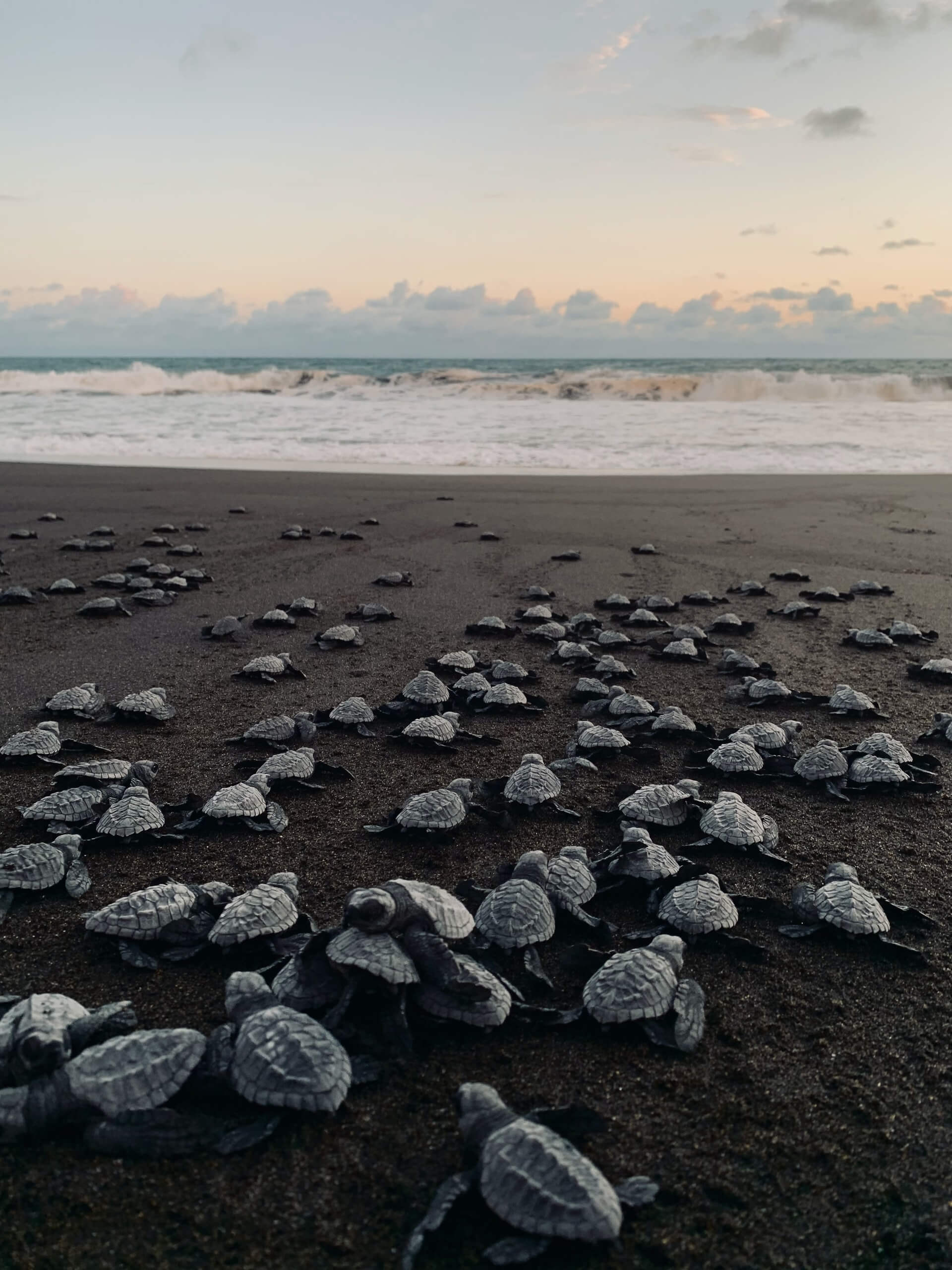
Monterrico, Guatemala
There are fewer people on the beaches, and they have a reputation as one of the world’s most laid-back beaches. In Guatemala, the conservation efforts of the indigenous sea turtle population make it one of the greatest destinations. In addition to the mangrove swamp and Club Auto Safari Chapn, Monterrico has a lot to offer tourists. The release of a baby turtle may be a lot of fun for you.
Guatemalan Culture and Traditions
Guatemalan culture is a mix of Spanish, Mayan, and European influences. They have a tradition of using the language Colonial Spanish for their literature and poetry.
Guatemala is a melting pot of cultures. It has a rich history that spans from the pre-Columbian period to the present day. It has been influenced by many different civilizations from all over the world. The country’s history is littered with civil conflicts, invasions from other countries, and military takeovers. Mayan city-states formerly ruled the country here; today, it’s a place of land grabs and internal turmoil. Even though some of this remains today, Guatemala is unquestionably on the path to peace.
Where you go in the country has a significant impact on the kinds of cultures you’ll encounter. The Spanish conquered Guatemala in the 16th century, and their influence can still be seen in many aspects of the country’s culture. Traditional Mayan settlements may be found near Lake Petén Itzá’s shoreline as well as along the Caribbean Coast.
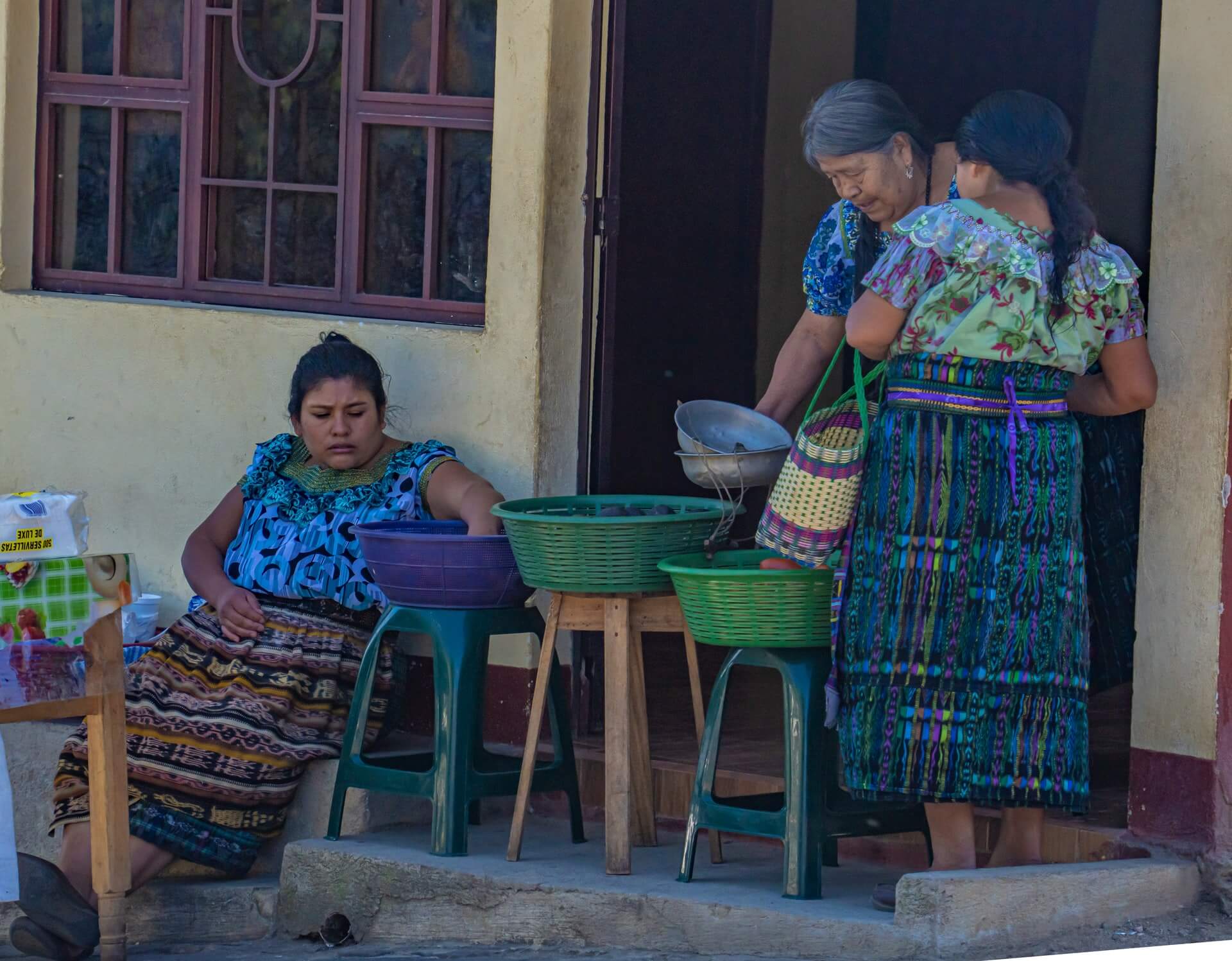
The country’s history is littered with civil conflicts, invasions from other countries, and military takeovers. Mayan city-states formerly ruled the country here; today, it’s a place of land grabs and internal turmoil. Even though some of this remains today, Guatemala is unquestionably on the path to peace.
Where you go in the country has a significant impact on the kinds of cultures you’ll encounter. The Spanish conquered Guatemala in the 16th century, and their influence can still be seen in many aspects of the country’s culture. Traditional Mayan settlements may be found near Lake Petén Itzá’s shoreline as well as along the Caribbean Coast.
Due to the country’s ethnic variety, Guatemalans lack a feeling of common cultural traditions, as seen by the many languages and lifestyles spoken throughout the country. There is a merging of indigenous and western customs. However, as more indigenous families relocate to metropolitan regions in search of education and more possibilities, The future of Guatemalan family life will likely be determined less by ethnicity and more by socioeconomic class as the country continues to consolidate.
How to Get Around in Guatemala
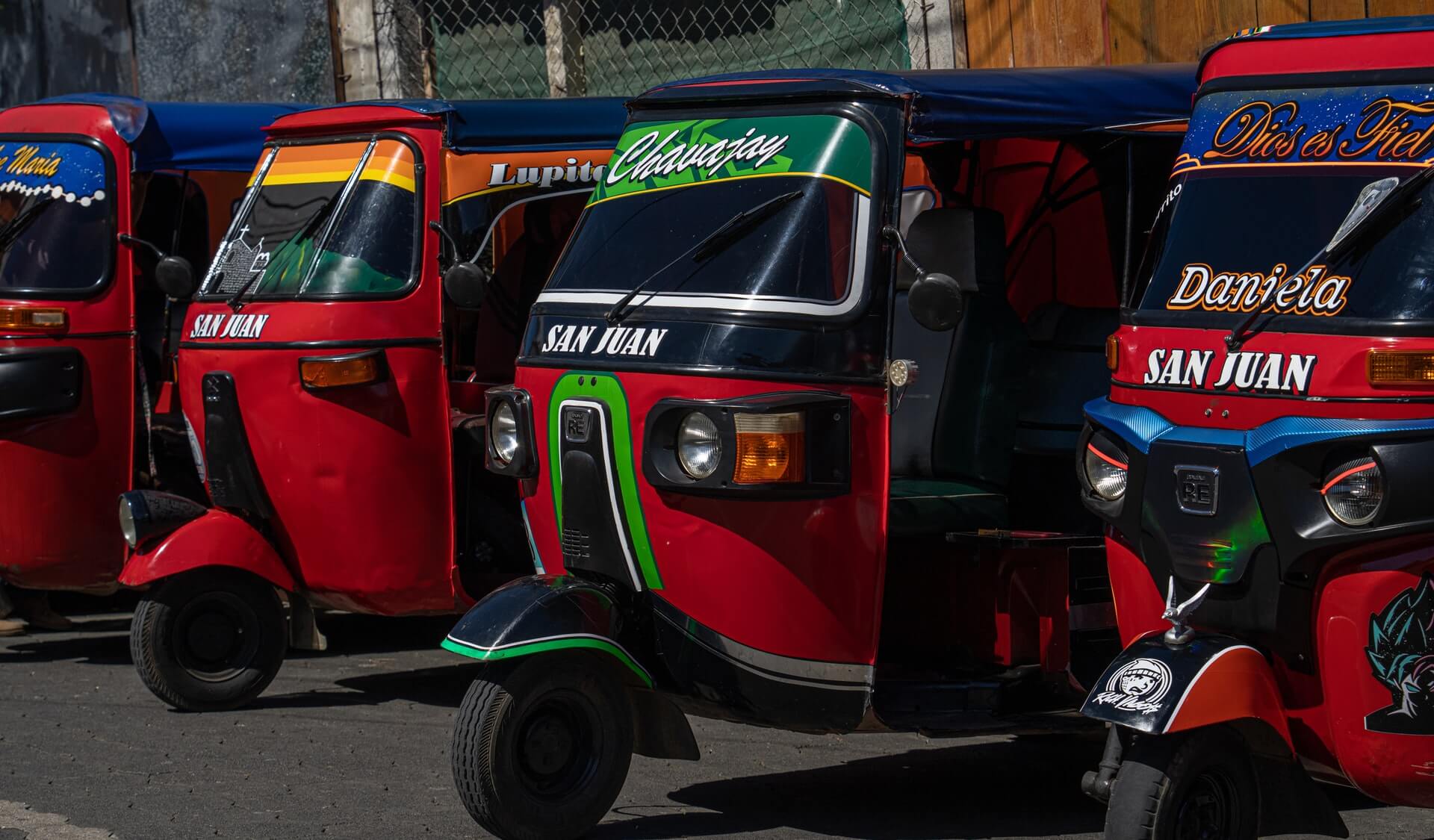
Lake Atitlán, Guatemala
Some rural sections of the nation still have dirt roads, despite the country’s road infrastructure having been significantly improved in the previous few years. However, you’ll always have the stunning Guatemalan countryside to marvel at no matter how fast or slow your travel is.
Using a bus
Cheap, convenient, and amusing, bus rides are a great way to get about. As a rule of thumb, the service extends to the tiniest of towns and cities.
A chicken bus.
There are two types of buses in Guatemala. “Chicken buses,” as they are more often known, emit dense black clouds of toxic fumes and rasping exhausts that are immediately recognizable. The seats and aisles of Camionetas, which are ancient North American school buses, are generally packed with passengers. Always, it appears like the driver is an underage, overworked mustachioed ladino who has an eye for women and is obsessed with speed and overtaking on blind curves. They must scramble up on the roof and grab your bag, collect your fare money and announce your destination to everyone else. The experience of riding a second-class bus may be unpleasant, but it is never boring because of the clucking chickens, the loud music, and the food merchants vying for your attention.
You can hail a chicken bus, and it will nearly always stop for you, no matter how many passengers are already on board, even if it’s a long distance between towns.
Tickets are almost always purchased on the bus, and while they are extremely inexpensive, foreigners are known to be taken advantage of, so keep an eye out for what the locals are paying instead. US$1–1.25 an hour is the average fare.
The Pullmans (first-class buses)
Pullman buses, which resemble Greyhounds but are more luxurious, are considered first-class, and advance tickets can be purchased. Compared to conventional buses, these “express” services cost roughly 25% extra, or about $1.50 an hour. However, there are also really elegant, higher-priced choices available. There is a wide range of services available, from luxurious double-decker buses with reclining seats and ice-cold air conditioning to run-down minibusses. All of the Pullmans are on time, and each passenger has a designated seat.
There are just a few important routes operated by Pullmans, which include lines to Ro Dulce and Flores/Santa Elena, the Mexican border, Quetzaltenango, Huehuetenango, Chiquimula and Esquipulas, Puerto Barrios, Cobán and Copán, and the rest of Central America. Don’t forget to keep an eye out for conductors who may be collecting tickets at the conclusion of the trip.
Pickup trucks and minibusses
In Guatemala, non-tourist minibusses (microbuses) abound, especially on paved highways. They frequently depart from the city’s major bus station or another nearby terminal. The cost of a single hour of travel on a microbus is roughly $1.25. Pickups (picops) are used to complement microbus services in rural areas, and the open-air vistas are unbeatable for the sheer enjoyment of travel (unless it’s raining!). Passengers pay around the same ($1.25/hr) as each other.
Taxis and Shuttles
Shuttle buses in Guatemala are quite popular since they connect famous tourist destinations quickly and reliably. Guests can be picked up right at their hotels and dropped off directly at the airport to make things easier. It’s easy to arrange an “especial” service (for a fee) if your location isn’t on a normal route thanks to the fast expansion of services that now serve nearly anywhere visitors travel in any quantity. Even while shuttles are pricey ($4–$5 per hour), their drivers are more cautious than those on conventional buses.
Flying
Currently, Guatemala’s only regular domestic flight is between Guatemala City and the island of Flores. One-way fares start at US$130 and go from US$220–250 roundtrip (as opposed to some eight hours on the bus). Three roundtrip flights a day are provided by Taca and TAG (see Dolores). It is possible to purchase tickets from any of the country’s many travel agencies.
In a vehicle
Despite the constant traffic in the capital and along the Interamericana and the highway to Puerto Barrios, driving in Guatemala is a truly liberating experience. Overtaking on blind bends and other dangerous driving habits are common in the area. All the major highways are paved, but the rest of the roads are typically in terrible condition. Gasolineras (filling stations) may be found just about everywhere. Fuel (gasoline) costs $4.40 a gallon in the United States.
Parking and safety are major concerns, especially in urban areas. Choose a hotel that has a safe parking lot and leave your car in a secured car park. Despite being on major motorways, there are several speed bumps (tmulos). Not to be overlooked are the warning signs specific to a certain area. This is the most popular method of alerting drivers to impending danger or broken-down vehicles. ‘Derumbes’ refers to landslides, whereas ‘free con motor’ denotes a rapid drop.
For a small hatchback, daily vehicle rentals start at $40, and for a 4WD, they may reach as much as $70. Be careful that many insurance providers require you to sign a condition that states that you will be liable for the first $1,000 in damage in the case of an accident, damage, or theft. Always purchase full-coverage insurance. The Guide to Major Cities includes local rental firms.
There is a lot of paperwork involved in importing an automobile into Guatemala. You’ll be given a 30-day automobile permit at the border, and if you overstay, you’ll face heavy fines. Central American insurance coverage is essential. To enter Central America, you’ll need to get additional entry permits. Driving licenses from the United States, Canada, the European Union, Australia, and New Zealand are accepted in Mexico and Central America.
A short journey in a taxi costs about $3 (or $5 in Guatemala City). Taxis may be found in all of the major cities. If you’re going outside of the capital, you’ll need to arrange a fee before you get in the cab. There’s a good chance that taxi drivers in the area will be willing to work out pricing for a half-day or full-day trip to surrounding villages or sights. If you can get a group together, this doesn’t have to be a prohibitively expensive alternative.
As a taxi, three-wheeled tuk-tuks from Thailand have multiplied in Guatemala over several years, whizzing about the city streets Bangkok-style. In most communities, they may be found in Guatemala City and Quetzaltenango. For a short journey, a charge of US$0.75 is typical; in Antigua, the fare is somewhat higher.
Motorbike or bicycle
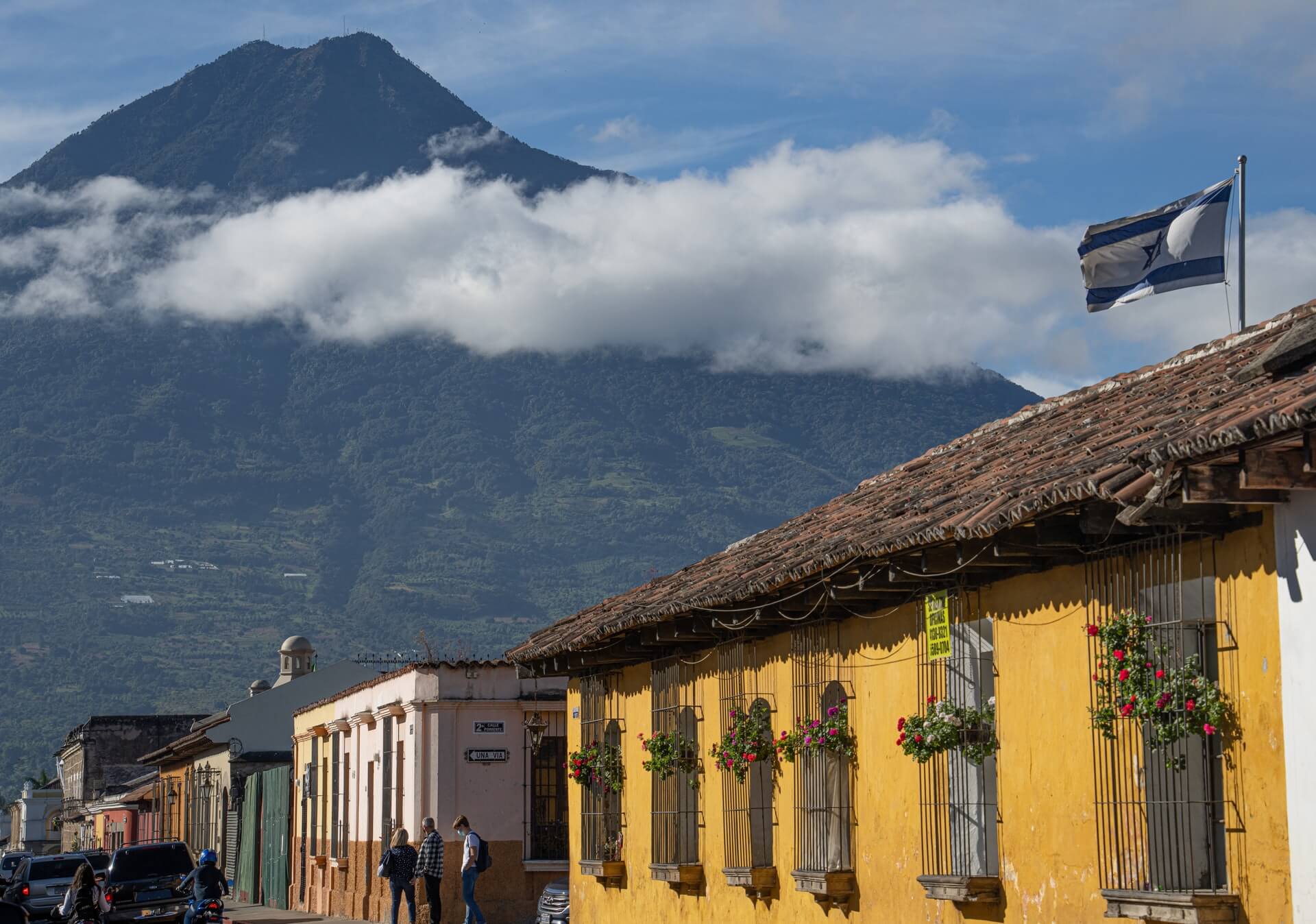
Antigua , Guatemala
Cycling is one of the most popular activities in Guatemala, and bicycles are widely available. If you go by bicycle, you’ll be welcomed practically anywhere, and almost every town will have a repair shop. There are several potholes on the main roads, and it’s almost impossible to avoid at least one hard climb – chicken buses will take bikes on the roof if you’re unable to handle the hills on your own.
Mountain bikes may be hired by the day ($8) or week ($25) in cities including Antigua, Panajachel, and Quetzaltenango. Maya Mountain Bike Tours in Antigua, Old Town Outfitters in Quetzaltenango, and The Bike Shop in Antigua all provide a variety of demanding bike tours for true two-wheel lovers. Motorbikes aren’t prevalent in Guatemala, so finding parts and mechanics isn’t always easy. In Panajachel, there’s a rental shop that prices from US$45 per day.
Ferry and boat
There are several boat routes around Lago de Petén Itzá from Flores in Petén, one of which is a tour around Petén. The village of Sayaxché is the starting point for a number of fantastic boat cruises, including the journey to the Lago de Petexbatin and Aguateca and the Ro de la Pasión to Ceibal. A mangrove canal in the Pacific coast of Monterrico and Paredón may be explored from the mangroves of Chiquimulilla.
The Ro Dulce gorge is Guatemala’s most magnificent boat ride, beginning at Livingston or Ro Dulce Town. For a more leisurely experience, book a trip to Livingston to take advantage of the public boats that travel this route. In Panajachel, you may lease an hour-long boat for around US$12, or you can take a public lancha that connects all of the important towns to the Lago de Atitlán.
Food and drinks in Guatemala
Although there isn’t a single national cuisine in Guatemala, a number of meals have become staples in the country’s diet. In the Mayan era, maize was an essential food source. The most common way to serve it is as a heated tortilla wrapped in a piece of cloth. Black beans, a staple of the Mayan diet, are also extensively icons according to your preference. They can be refried, mashed, or eaten rence. Rice, eggs, and cheese round out the list of essentials.
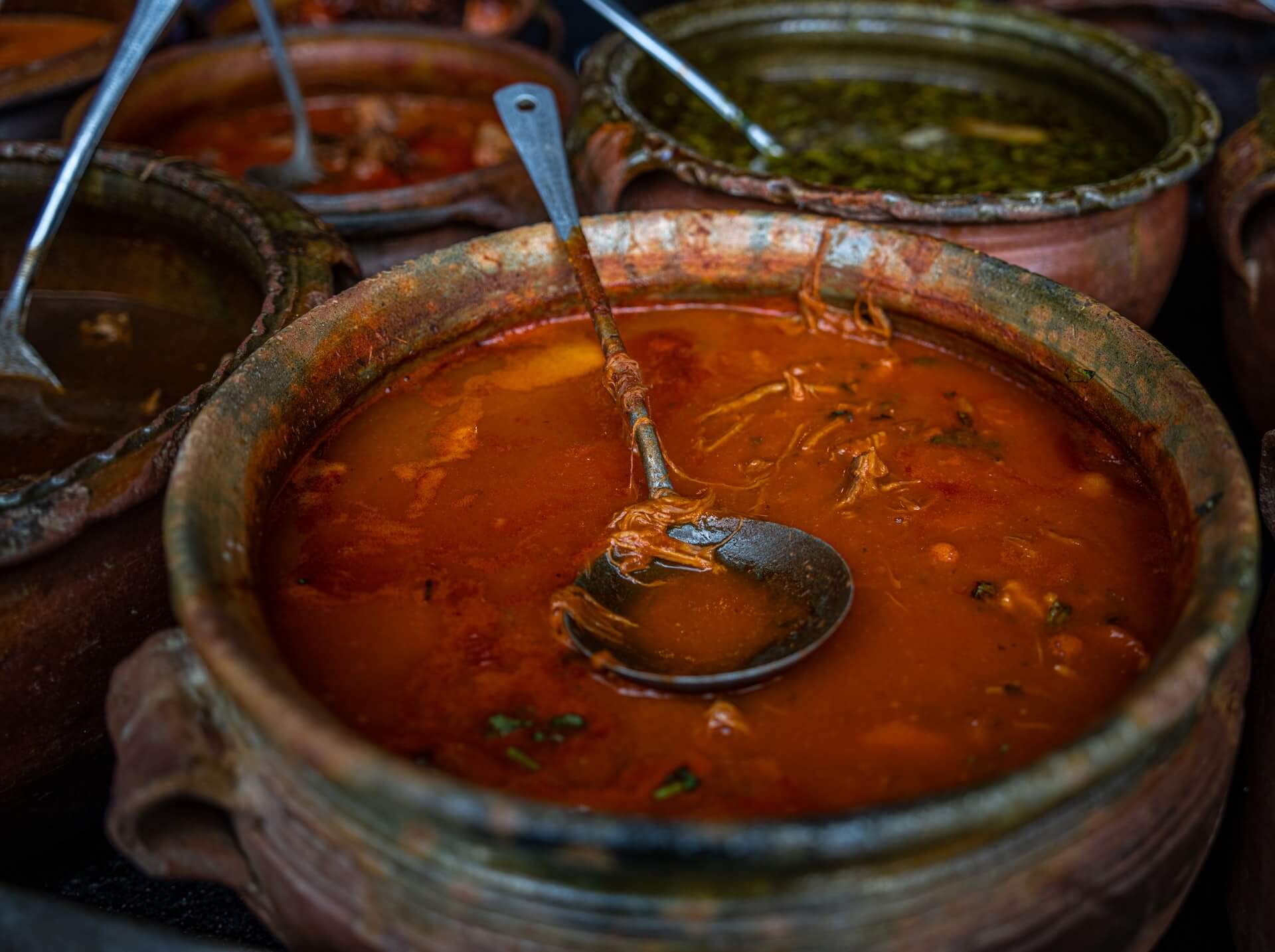
Cuevita de los Urquizi, Antigua , Guatemala
Chicken, turkey, and beef are the most commonly consumed meats in Canada. Roasted, grilled, or fried, usually eaten with beans and rice. Stews can also be made using them. A traditional Antiguan dish, pepian is a thick stew made with meat and vegetables. As the national food, pepian is a stew of chunky root vegetables and a broth prepared from a wide variety of dried peppers and pumpkin seeds. Usually made with chicken, it comes with a side of rice and is quite filling. On the coastlines, you’ll find some of the best seafood in the world, cooked in several ways and garnished with a variety of spices. Although doughnuts and other high-calorie snacks are popular, the quantity of fresh fruits and vegetables makes it easier to maintain a nutritious diet. When fresh mangoes, papayas, bananas, yucca, and plantains are available virtually year-round, it isn’t difficult to receive your daily serving of fruits and vegetables.
A much of the world’s greatest coffee comes from Guatemala’s highlands. Because of this, the Antigua area (where most of the country’s coffee is grown) has a vibrant café culture. Tasting excursions are also given at some of the most opulent estates. Moreover, half of Guatemala’s GDP comes from coffee, and the country is renowned for its high quality. The rich Guatemalan coffees and their dark tastes should undoubtedly be sampled on a visit to the country. Soil type, altitude, humidity, and rainfall affect the taste of Guatemala’s Arabica coffee in various ways. Visitors visiting Guatemala may expect to discover a wide variety of excellent coffee, as well as the opportunity to view and smell the beans drying in the sun as they explore the country. Drinks such as licuados are made by combining fruit juices with water or milk and sugar, and soft drinks are also popular.
How Safe Is Guatemala for Travel?
Guatemala is generally safe for tourists, except for some regions in the border areas. Guatemala has a high crime rate, especially in its capital Guatemala City. Although Guatemala City might be considered safer than cities in Honduras or El Salvador, you should still exercise caution when traveling there.
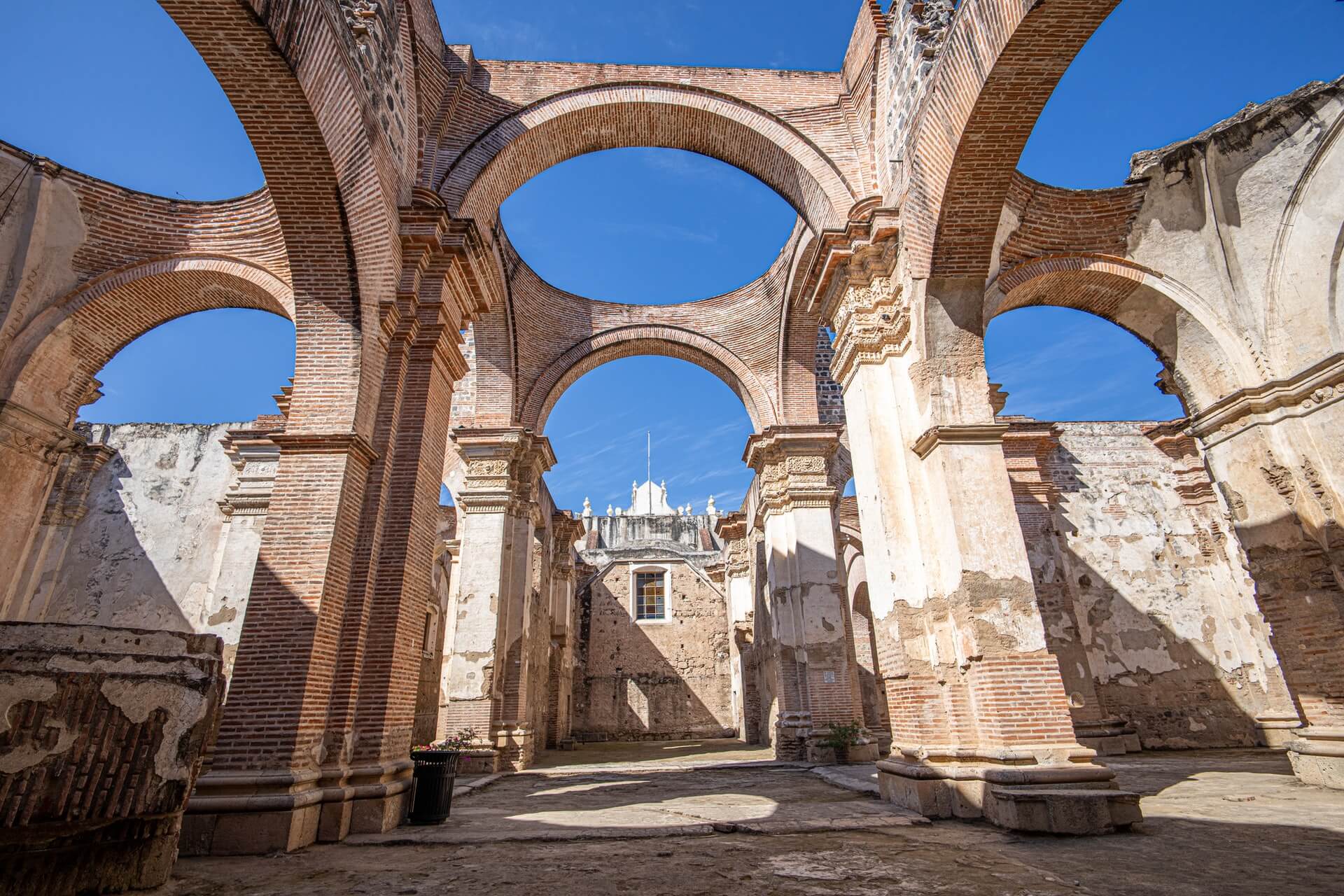
Antigua Guatemala, Guatemala
While not a common occurrence, violent crime can happen anywhere in Guatemala and should be avoided at all costs, there are certain neighborhoods that you should avoid visiting at night if possible to avoid being assaulted or robbed by gangs or organized criminal groups. Theft of Identity in Guatemalan Cities
People gather in large numbers in markets, on public transportation, and during public processions, making them ideal prey for local pickpockets. Pickpocketing is very prevalent in Antigua during Holy Week. Travelers have reported their wallets being slashed in many pockets while visiting Chichicastenango’s world-famous marketplaces. Despite his pockets being zippered shut, another passenger was targeted by Solola market pickpockets.
When you’re not paying attention, criminals will take advantage of the opportunity to steal your valuables. IN GUATEMALA, the US Embassy has received allegations of pickpocketing US visitors leaving the Aurora International Airport, on buses from Guatemala City to Antigua, and while out shopping and touring. What can you do to keep yourself safe and not become a victim? Don’t take valuable stuff with you if you need to keep them nearby. Dress modestly to fit in and leave the diamond studs and pricey timepieces at home.
Avoid nighttime travel, which might put you at risk of being robbed, especially in crowded areas. Guatemalan criminals target ATMs and credit cards. In Guatemala, bank card fraud and account swiping its widespread occurrence. ATM users in Antigua’s Central Plaza claim bogus charges after withdrawing cash. These schemes have also targeted ATMs at Antigua grocery shops.
According to local media reports, credit card cloning is a common problem in Guatemala City. To avoid this:
- Make all of your purchases with cash, and just bring along as much local money as you’ll need for the day.
- Keep your valuables in the safe of your hostel or hotel (if there is one).
- Inform the banks of your travel plans if there are any suspicious transactions when you return or depart.
Cars may seem like a safe location to keep your belongings, but automobile break-ins are common in Guatemala. An individual who had left their automobile parked at a petrol station stated that their vehicle had been broken into. Her laptop, wallet and a slew of credit cards were all inside.
In Guatemala City, incidents like these are common, but vigilance should be exercised whenever valuable belongings are left in a vehicle unattended. Keep your valuables hidden or, better yet, carry them with you at all times.
In Guatemala, armed robbery is common. Many visitors to Guatemala will have no issues with theft or robbery, but it’s important to know where armed robbery might occur. Weapons, such as firearms, knives, and even grenades, might be used in this scenario. Avoid zones 1, 3, 6, 18, and 21 in Guatemala City, which has been identified as crime areas. Visitors have reported being robbed at gunpoint when climbing Volcan de Agua’s volcano or while exploring the country’s many hiking trails and trails.
Gunpoint robberies on tourist buses and shuttle buses are not unheard of. Thieves and drivers are more likely to collaborate when a car is located in an inconvenient location. Most of the time, this type of occurrence occurs when a private shuttle driver deviates from the path marked or travels to a distant spot where multiple masked guys rob passengers. At gunpoint, numerous people were taken hostage aboard a bus from Antigua, Guatemala, to Leon, Nicaragua, in 2017. This is not the first time this has happened; a similar event occurred in 2017.
You may lessen your chances of getting stolen by following these simple guidelines:
- Talk to the locals; they’ll tell you where the shady areas are and whether or not a neighborhood or street is a crime hotspot.
- Avoid taking public transportation late at night if at all possible. Make use of the sun’s rays when departing and arriving.
- Take a first-class bus service when commuting between cities.
- Make use of licensed radio-dispatched taxis, such as Taxi Amarillo and Taxi Blanco y Azul, for your transportation needs.
- Don’t show off your jewelry, cash, or credit cards when out and about.
- Take advantage of ATMs at your hotel or bank rather than outside.
- A fake wallet with a small quantity of cash that you are willing to hand over if robbed is also a good idea.
When Is The Best Time To Go To Guatemala?
The best time to go to Guatemala is from November to May because of the lower humidity, making it more comfortable.
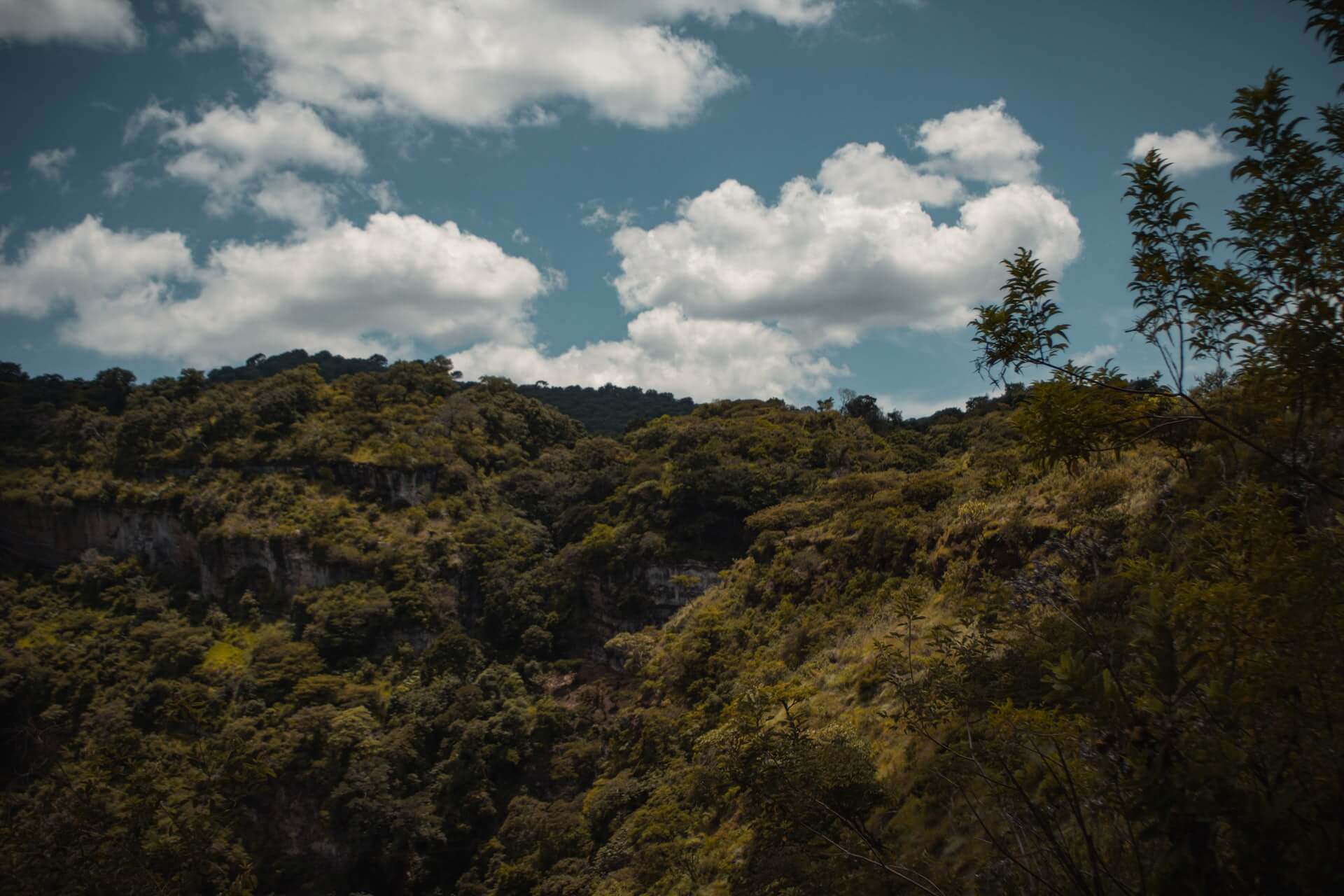
If you visit Guatemala during this time, you’ll be able to experience some festivals and cultural events. For example, on December 24th, there is a Christmas celebration called Jueves Santo or Holy Thursday. Or on December 31st, there is a celebration called Día de Reyes, which translates as Day of the Kings.
What Is The Weather Like in Guatemala?
The weather in Guatemala differs depending on the altitude. The weather is always humid and rainy in coastal regions, so it is best to visit these areas only during the dry season. At higher altitudes, it can be cold and damp. Many travelers refer to Guatemala as the “Land of Eternal Spring” due to the nation’s mild temperature, which is certainly true for much of the country. There are, of course, some exceptions! The altitude is the most important factor to consider when planning a trip to Guatemala in terms of climate.
Antigua, Guatemala City, Lago de Atitlan, and Chichicastenango are all located in the highlands, where the height ranges from 4,260-6,890 feet (1,300-2,100 meters). In contrast, the daily temperature ranges from 64 to 82 degrees Fahrenheit (18 to 28 degrees Celsius). Humidity is almost seldom an issue. Keep in mind, though, that temperatures may drop at night, so bring a variety of clothing to keep warm. The heat and humidity in the coastal districts and the Peten rainforest lowlands may be exhausting. Be prepared for temperatures to rise over 85°F (30°C) at any time of year. The climate is to blame for the lushness of the forest around the Tikal ruins. The ruins are breathtaking, but come prepared for sweltering and humid circumstances: imagine creating these enormous pyramids in these conditions!
Guatemala has two distinct seasons. From May through October, the rainy season is known as winter. Travelers to Guatemala may anticipate a combination of sun and clouds, with brief tropical downpours in the late afternoons that clear off by evening. Summer, often known as the dry season, lasts from November to April and is marked by the lowest temperatures of the year. Because of the bright skies, December and January have the coldest overnight temperatures, with the possibility of snow and frost at higher elevations. This is the greatest time of year to visit Guatemala for most of the nation. The warmest months of the year are April and May, which are followed by the beginning of the rains.
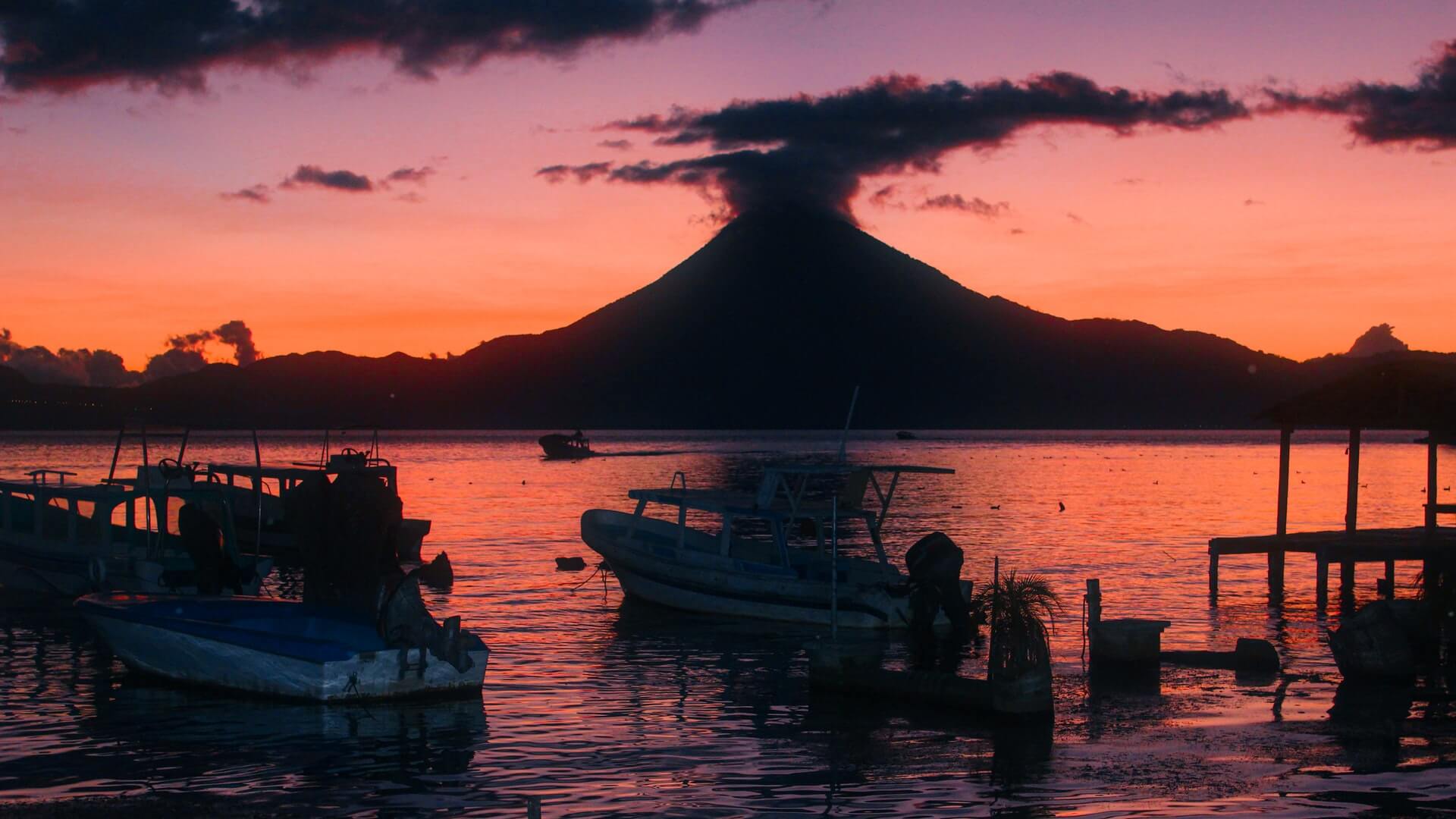
Atitlán, Guatemala
What Documents Do I Need To Visit Guatemala?
A valid US passport and proof of onward or return travel are all you’ll need to enter Guatemala if you’re a citizen of the United States. Guatemala does not require a visa for US citizens to remain for up to 90 days. Other nations need a valid passport for at least three months beyond the expected duration of stay and proof of onward or return travel, including the EU, Canada, Australia, Israel, and Switzerland.
If you’re a foreigner in Guatemala, you must always have a copy of your passport with you. The CA-4 Border Control Agreement was signed in 2006 by Guatemala, Honduras, El Salvador, and Nicaragua. There are no immigration requirements for people of these nations who wish to visit each other’s country. A visa is not required for US citizens and other foreign nationals who legitimately enter one of these nations.
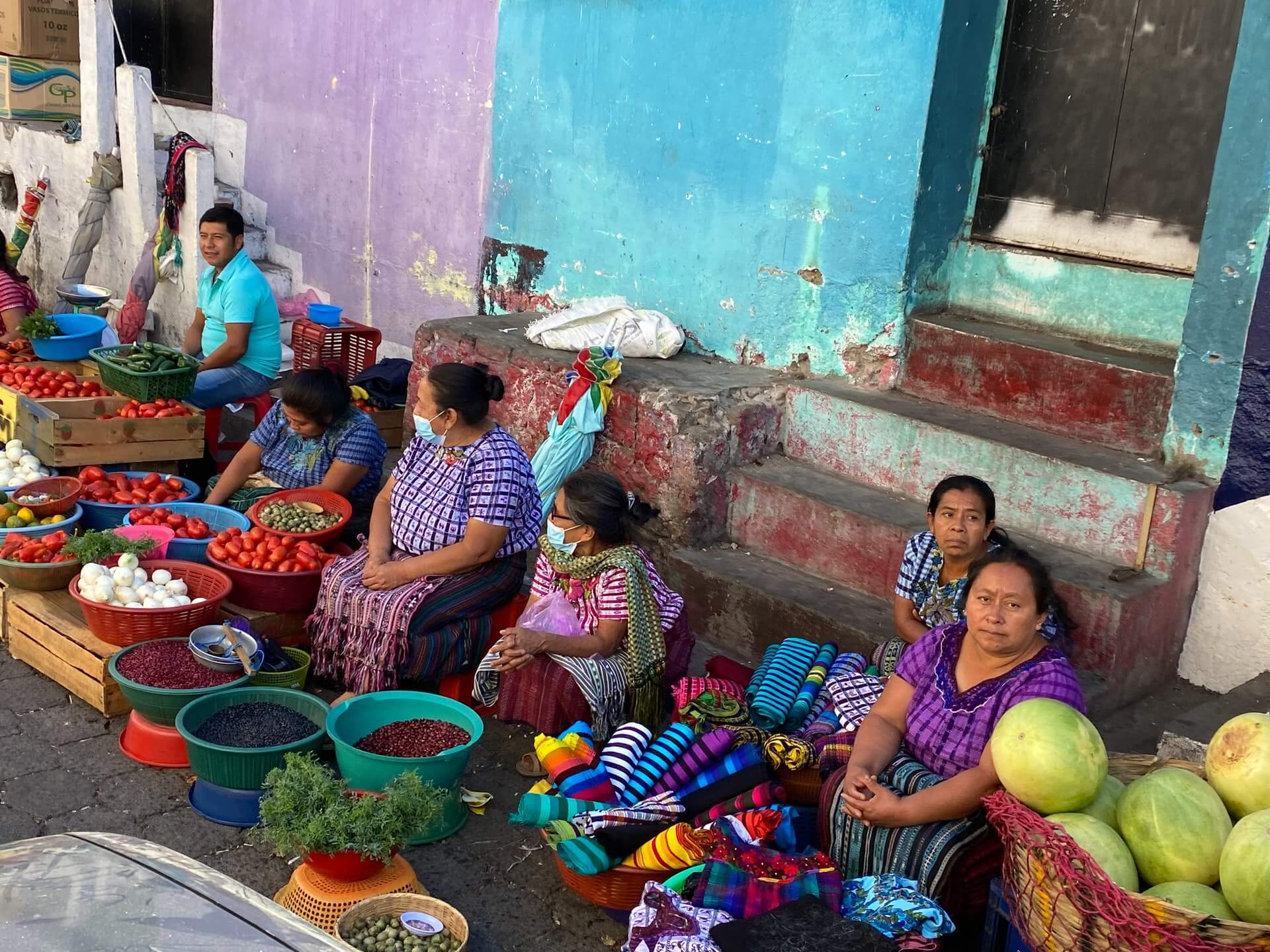
It is up to officials in the first nation to decide how long a visitor can stay. Local immigration officials must be contacted if you seek to extend your stay in the four-country zone. You can even take a trip to a different country in the area and return.
To be safe, it’s always wise to double-check with your embassy for the most up-to-date information on entry criteria. Citizens of the United States do not require a visa to visit Guatemala for up to 90 days. Foreign nationals may be limited to a 30-day stay. To ensure that you may stay in Guatemala for as long as possible, you should check with your country’s embassy. The immigration office in Guatemala City grants extensions. You’ll need to present documentation of an onward ticket and financial soundness to be granted a visa extension.
Conclusion : Soaring Volcanos and Intriguing History – Welcome To Guatemala!
To get the most out of a trip, you should always do some research about things to do in Guatemala before you arrive. Only Guatemala’s vast natural beauty and diverse history attest to this fact, though. Being a bit familiar with Guatemala is sure to make your trip there more enjoyable. Guatemala is a fascinating example of modernism and antiquity juxtaposed despite its blemishes. Combining multiculturalism, social strife, and tourism, you get an enticing mix.
Guatemala City indeed has a long way to go in terms of crime rate and economy, but without tourism, the city would be nearly impossible for it to achieve these goals. Attracting 1.5 million visitors annually, there must be something special about this city that entices people to keep returning.
This tropical paradise has a lot more going on than first appears. Even if you live in a dangerous area, you still need to be vigilant and aware of your surroundings. As a starting point from which you may explore the rest of Guatemala, the capital of Guatemala, Guatemala City, is a must-see destination for anybody interested in seeing a varied, energetic, and fashionable city.


